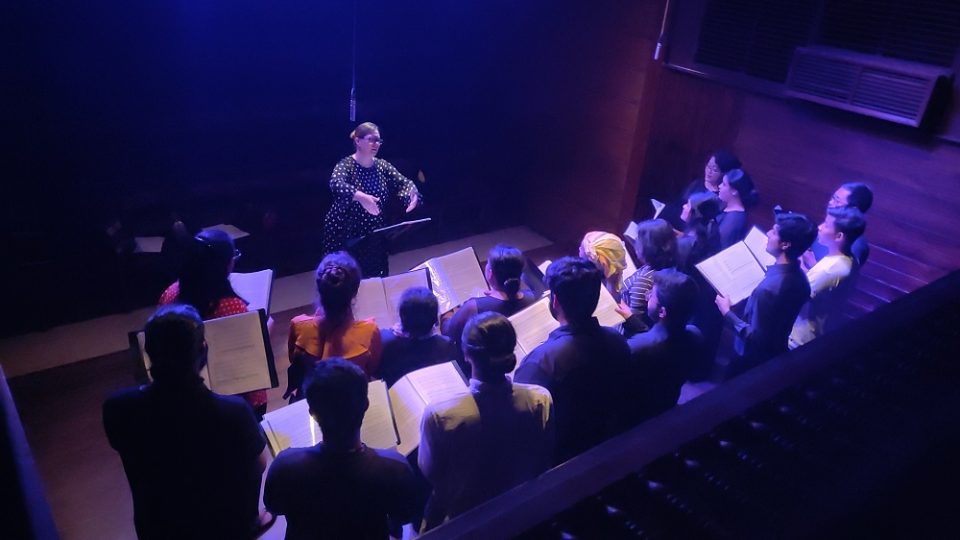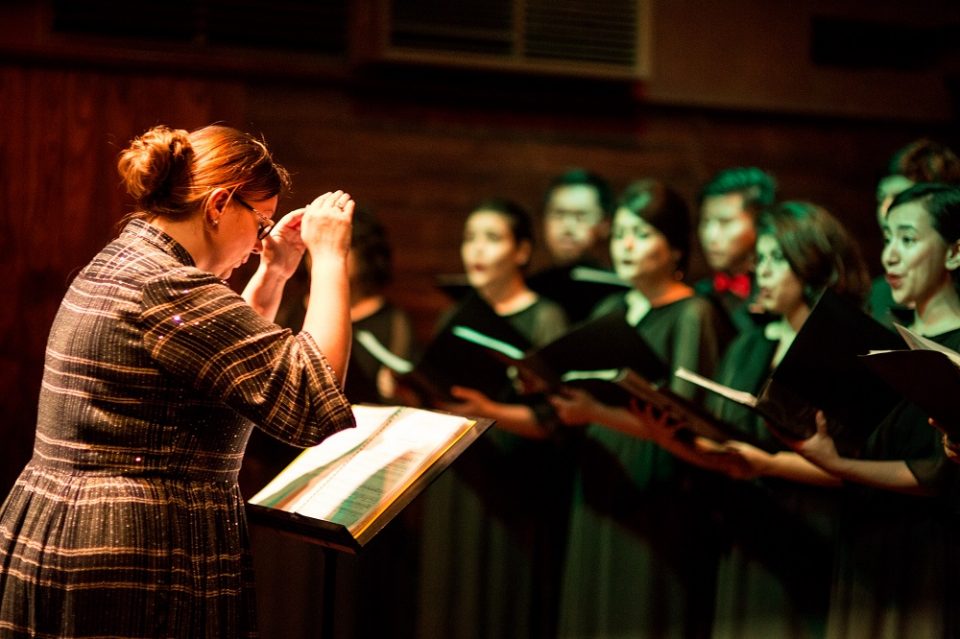How the Delhi Chamber Choir Has Adapted During COVID-19, Sustaining Indian Choral Singing
Conductor Nadezda Balyan talks to us about the ‘new look’ choir, challenges they’ve faced during the pandemic and future plans
When Nadezda Balyan began singing and conducting with the Delhi Chamber Choir (DCC), it mainly consisted of expatriates living in the capital. However, recently, Balyan has rejigged the look of the choir with young Indian singers. She says, “My idea was to bring people from diverse professional and cultural backgrounds who would have a repertoire in common. DCC is a space where people learn not just music, but also each others’ life experiences.”
The DCC focuses on chamber music from the 16th to 17th century as well as material by contemporary composers such as Eric Whitacre and Ola Gjeilo. “For different epochs of music, there is a distinct approach to the sense of sound,” says Balyan.
As most artists have found out, it’s been very difficult to cope since the coronavirus pandemic broke out. In this interview with Rolling Stone India, Balyan talks to us about some of the achievements of the DCC, adjusting to the current times, what’s in store going forward and more.
Before we go into how things have changed for the choir since COVID-19 broke out, tell me about some of the milestones and stellar performances that come to mind.
The old DCC had been inactive for a few years, but I missed singing chamber music. That’s when I got a couple of kids together to try out some Baroque pieces. I signed up a group of largely untrained singers for the ABRSM (Associated Board of the Royal Schools of Music) exams. I selected some complex pieces from the Baroque and Romantic periods and even a six-part arrangement of a Russian folk melody. Larissa [Rai] helped the singers with their vocal technique. On the day of the examination, one of my soloists fractured her leg and entered the examination room with a plaster. Another singer had just been discharged from the hospital after recovering from swine flu. The examiner from London thought we were very brave and he was truly impressed with the dedication.
This concert then led to the packed show at Akshara Theatre where we took the audience on an aural journey from Renaissance to Modern choral music. There’s been no stopping since then, at least till the lockdown happened!
What are the challenges faced by the group now that we’re living through a pandemic?
We were all set to perform in March with Italian organist and conductor Paolo Devito, Russian Soprano Tatiana Smantser and Mezzo-Soprano Larissa Rai, when the pandemic broke out globally and we were forced to cancel everything just one week before the show. It was very disheartening as this would have been our first international collaboration without an intermediary institution.
Since then we’ve tried to continue things online, but it’s been very challenging. Rehearsing on Zoom is difficult due to the audio delay which makes it hard to sing together. It’s a good opportunity for engineers to develop software to help choirs rehearse! We’ve collaborated on global virtual projects by Whitacre and V.O.I.C.E. choir (Vienna), but it’s not the same thing as singing together.
When we sing in a choir, we exchange emotions and energy. Then there’s the technical side. All the singers, with the help of the conductor, are simultaneously balancing five parameters: Timbre, to achieve choral unison by producing sound in the same manner. Harmony, to balance all the parts in a harmonic structure, and strengthen the melody in a homophonic structure (melody+ accompaniment). Articulation, to pronounce the text in the same way. Metro-rhythmic balance which simply put is articulating the poetic text correctly and in time. Dynamics, to balance in the strength and volume of voices within a part.
All of these factors need to be perfectly balanced to achieve a high-quality choral unison. Without achieving this unison, it’s impossible to build the harmony or the vertical chord. None of this happens when you’re singing alone in your room. All you do is record your voice and let the technician do all the work for you.
But even before the pandemic, it was a challenge to find venues where 30 singers can rehearse. We don’t have concert halls like in Europe where singers are using the audience seats to physically distance themselves during rehearsals. Here venues like these are few and they charge a lot of money. Every city could do with an institution like the NCPA in Bombay.

Conductor Nadezda Balyan says, “The biggest challenge is not knowing when we will be able to perform in front of a live audience again, but we’re trying to move forward.” Photo: Courtesy of DCC
Have you guys found a way around how DCC can continue even though gatherings and live music shows are on hold?
We’ve continued with vocal and theory classes throughout the lockdown so that we come out of this at least as better musicians, if not a better choir.
The biggest challenge is not knowing when we will be able to perform in front of a live audience again, but we’re trying to move forward. There are plans for livestreams of empty-hall concerts around Christmas. We’re managing virtual rehearsals in groups of three to learn the scores. In October we’ll try meeting in small groups of four-eight to rehearse together and even record a few videos. All these are first-attempts so it will be a lot of work. We’re hoping that life returns to some semblance of normal after December.
What needs to be done for classical music to thrive in India?
There’s a lack of infrastructure and institutional support for classical musicians in India, both Hindustani/Carnatic and Western. That’s quite disappointing since Indian musicians possess such a high aptitude. They have a very good ear for music, tremendous sense of rhythm, they easily adapt to a new language, which is very important especially for opera and choral music. There is a lack of educational institutions and consequently a lack of musical theatres and opera house which pushes them to go abroad, and then they stay there.
We have singers who are now performing in opera houses in Germany, France and U.K., some of them even conducting their own choirs. And we raised them here, we trained them here, before they went to study at European conservatories and became singers of globals standards. I’m sure if there was any money in classical music many indie musicians would be performing it.
Also, while we may have many choirs in India, there are very few trained conductors. Since I have an educational and professional background in choral conducting, I can clearly hear the difference in sound when singers conduct versus trained choir conductors. The latter are like engineers controlling the sound the audience hears. We are at once the metronome, the score, the tuning fork, we control the tone, the phrasing, even the singers’ breathing – all with the use of our hands. 90 percent of a concert’s success depends on the conductor’s knowledge of using her hands. If you know the subtleties of the conductor’s gestures, the choir will always react, and the concert will be successful.
What does the future hold for DCC?
I want to introduce classical choral music to more young people to and take them on this beautiful journey of discovery, just like the current members experienced it. There aren’t many groups in India singing chamber music which is interesting given the deep similarities between Baroque and Hindustani music. The difference is that western classical music moved towards strict harmonic rules but Hindustani kept its linear structure and improvisation.
This choir will always emphasize education. I see my current singers teaching this repertoire to their own small groups.
We’re looking at collaborating more with international conductors, soloists, and musicians. We’d love to travel and represent India on the international stage. In fact just one week before the lockdown we had received invitations from choral festivals in Russia and Austria and they were ready to sponsor most of our costs. However such sponsorships are rare and it would be great to get government support. Music is an easy way to create cultural ties between countries.
So yes, there’s a long way to go and much to do!




